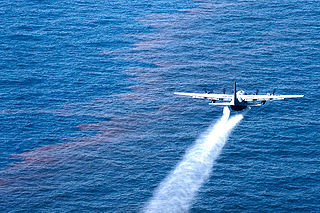
The 757th Airlift Squadron is an Air Force reserve unit, part of the 910th Airlift Wing stationed at Youngstown Air Reserve Station (YARS), Ohio. It flies C-130H Hercules aircraft on airlift and aerial spray missions.

The 446th Airlift Wing is an Air Reserve component of the United States Air Force. It is assigned to the Fourth Air Force, Air Force Reserve Command, stationed at McChord AFB, Joint Base Lewis-McChord, Washington. The 446th is an associate unit of the 62d Airlift Wing and if mobilized the wing is gained by Air Mobility Command.

The 728th Airlift Squadron is a United States Air Force Reserve squadron, assigned to the 446th Operations Group, stationed at McChord Field, Joint Base Lewis-McChord, Washington. It is an associate unit of the active duty 8th Airlift Squadron of the 62d Airlift Wing.

The 357th Airlift Squadron is a Tactical Airlift unit of the United States Air Force assigned to the Air Force Reserve Command and part of the 908th Airlift Wing at Maxwell Air Force Base, Alabama. It operates Lockheed C-130H Hercules aircraft providing global airlift. The 357th AS operates (8) C-130H2 aircraft that were built in the 1990s, which utilize Flight Engineers and Navigators, along with the crew complement of Pilots and Loadmasters.

The 700th Airlift Squadron is part of the 94th Airlift Wing at Dobbins Air Reserve Base, Georgia. It operates Lockheed C-130 Hercules aircraft providing global airlift.
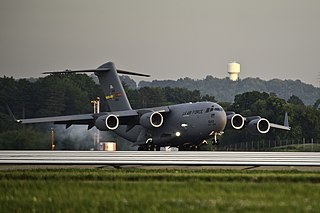
The 729th Airlift Squadron is a United States Air Force Reserve squadron, assigned to the 452d Operations Group, stationed at March Air Reserve Base, California. It operates Boeing C-17 Globemaster III aircraft providing global airlift any time, any place.

The 730th Air Mobility Training Squadron is an Air Force reserve unit stationed at Altus Air Force Base, Oklahoma, where it trains airmen on Boeing C-17 Globemaster III, Boeing KC-135 Stratotanker and Boeing KC-46 Pegasus aircraft systems. It is assigned to the 507th Operations Group at Tinker Air Force Base, Oklahoma, but performs its training mission under the direction of the 97th Air Mobility Wing of Air Education and Training Command.

The 758th Airlift Squadron is part of the 911th Airlift Wing at Pittsburgh International Airport, Pennsylvania. It operates the Boeing C-17 Globemaster III aircraft, providing global strategic airlift.

The 706th Aggressor Squadron is part of the 926th Wing at Nellis Air Force Base, Nevada where it oversees Air Force Reserve Command fighter pilots supporting the United States Air Force Warfare Center as an associate of the 57th Wing. Pilots assigned to the 706th fly General Dynamics F-16 Fighting Falcon aircraft.

The 336th Air Refueling Squadron is a United States Air Force Reserve squadron, assigned to the 452d Operations Group, stationed at March Joint Air Reserve Base, California. The squadron shares its aircraft and facility with the 912th Air Refueling Squadron, a USAF Associate Unit assigned to the 92d Air Refueling Wing.

The 756th Air Refueling Squadron is a United States Air Force Reserve squadron, assigned to the 459th Operations Group, stationed at Joint Base Andrews, Maryland.
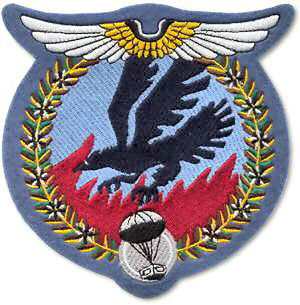
The 67th Troop Carrier Squadron is an inactive United States Air Force unit. It was last assigned to the 433d Troop Carrier Group, based at Rhein-Main Air Base, West Germany. It was inactivated on July 14, 1952.

The 446th Operations Group is a United States Air Force Reserve unit assigned to the 446th Airlift Wing. It is stationed at McChord Air Force Base, Washington.

The 702d Expeditionary Airlift Squadron is a provisional United States Air Force unit. It is assigned to Air Combat Command to activate or inactivate as needed. It was active at Kandahar Airfield from 2011 to 2012.

The 738th Expeditionary Airlift Squadron is a provisional United States Air Force unit. It is assigned to Air Combat Command (ACC) to activate or inactivate as needed. It operates Lockheed C-130 Hercules aircraft in theater airlift missions as part of the Global War on Terrorism. Its current status and duty location is undetermined.

The 704th Fighter Squadron is an inactive United States Air Force unit. It was last assigned to the 924th Fighter Group at Bergstrom Air Force Base, Texas, where it was inactivated on 27 September 1996, when Air Force operations at Bergstrom ended.
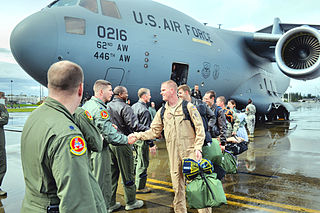
The 817th Expeditionary Airlift Squadron is a provisional United States Air Force unit, assigned to Air Mobility Command to activate or inactivate as needed. It engaged in combat operations in Southwest Asia.

The 924th Fighter Group is a group of the United States Air Force Reserve. It assigned to the Tenth Air Force and stationed at Davis-Monthan Air Force Base, Arizona as a Geographically Separated Unit (GSU) of the Air Force Reserve Command's 442d Fighter Wing at Whiteman Air Force Base, Missouri. On 1 October 2012, the 924 FG was reassigned to the 944th Fighter Wing at Luke Air Force Base, Arizona. The 924th flies the A-10 Thunderbolt II aircraft.

The 925th Tactical Airlift Group is an inactive United States Air Force Reserve unit. It was last active with the 446th Tactical Airlift Wing, based at Ellington Air Force Base, Texas, where it was inactivated on 25 March 1968.
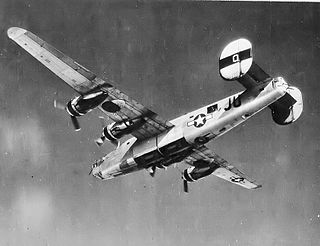
The 707th Bombardment Squadron is an inactive United States Air Force unit. It was last assigned to Twelfth Air Force at Lubbock Air Force Base, Texas, where it was inactivated in March 1950.


























